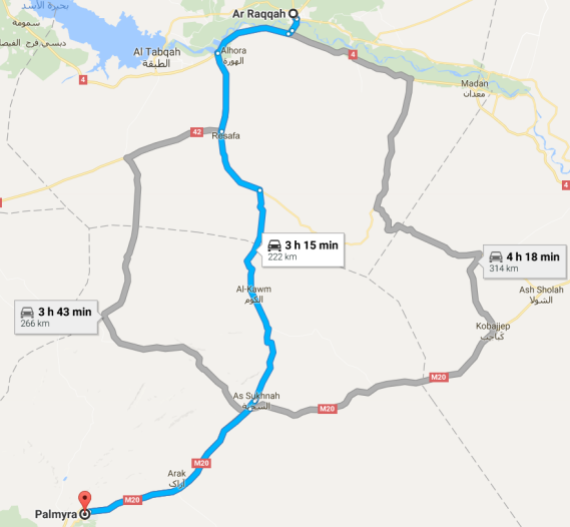
By Mehmet Ersoy

On December 10, the world media reported that IS terrorists started an offensive on Palmyra liberated by the SAA in spring. According to Syrian MoD, the total number of fighters exceeded 4,000, they used tanks, infantry fighting vehicles and improvised cars with heavy guns.
On December 11, the terrorists pushed the government troops and took control over central Palmyra. At the same time Homs governor Talal al-Barazi said that unfortunately only some 80% of Palmyra residents had been evacuated.

Within one day, Palmyra saw the continuing intensified clashes between the SAA and ISIS; Damascus and its allies killed more than 300 militants and destroyed dozens of vehicles. However, eventually the troops had to leave the town.
Obviously, the Syrian army command was unprepared for such a large-scale attack. Another thing is also clear: the Islamic State wouldn’t been able to deploy such a number of troops and vehicles without any aid. The largest group might have arrived from Raqqa which is about 220 km to the north of Palmyra.

Yesterday, various Middle East media reported the terrorists’ success became possible due to the US-led international coalition which had suspended its operations in Raqqa during the offensive on Palmyra. Using such a pause, ISIS regrouped and moved its forces for the upcoming attack on the ancient town. Besides, terrorists seem to have arrived from Deir Ezzor and Iraq’s Mosul through the corridor set up by the coalition.
It could be supposed that the movement had been planned and coordinated with the US-led coalition. That means the West once again showed how it is using the Islamic State as a tool for reaching its goals in Syria.
Captured Palmyra is just a symbol of success for ISIS. The things that matter are the oil and gas fields Jazal and al-Shaer controlled by the SAA. Depriving Damascus of a possibility to maintain control over the fields, distracting the government forces from liberating Aleppo and lowering their morale are the main targets of the coalition up to now.
Another proof of these is that on December 8 Barack Obama waived any arms export control restrictions on providing ‘military assistance’ to any and all ‘foreign forces’ in Syria.
The Syrian army keeps advancing in Aleppo, and the West-backed terror groups are surrendering and fleeing the battlefield which forces the US to use all means to prevent the victory of Damascus.










Leave a Reply